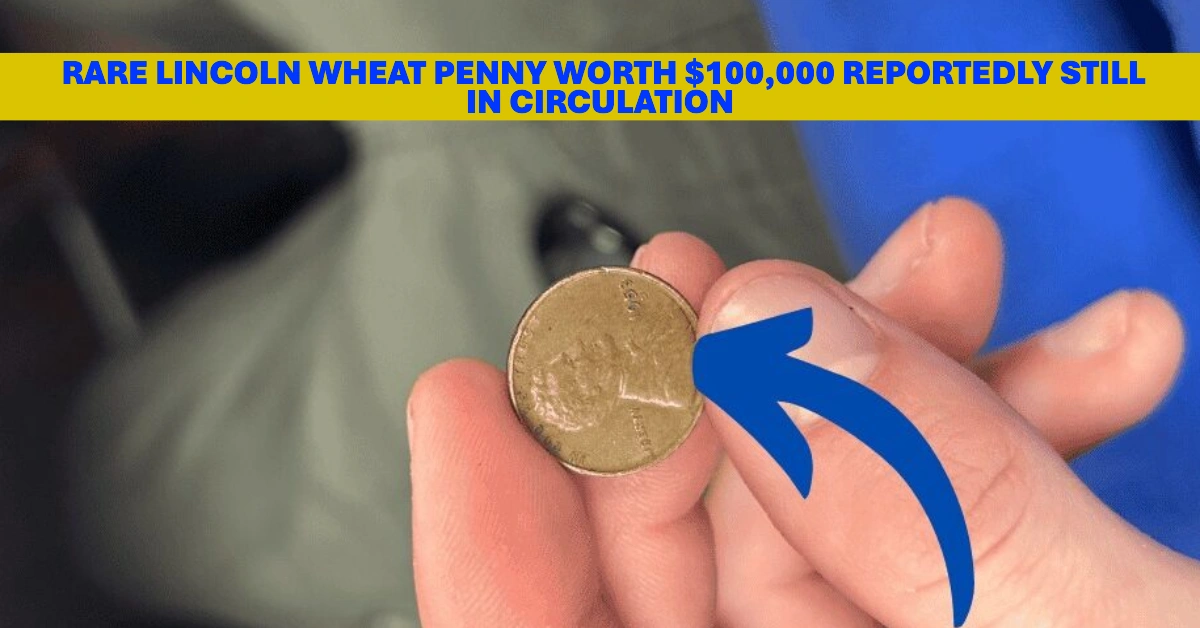A Penny That Could Be Worth a Fortune
The Lincoln Wheat Penny might look like an ordinary coin, but don’t be fooled—it could be one of the most valuable pieces of currency still hiding in plain sight. Introduced in 1909 and once common in everyday transactions, certain versions of this penny now fetch thousands—and in some cases, hundreds of thousands—of dollars at auctions. In this article, we’ll uncover why some of these humble coins are so valuable, how to identify them, and whether you might unknowingly have one in your possession.
Table of Contents
The Origins of the Lincoln Wheat Penny
A Tribute to Abraham Lincoln
The Lincoln Wheat Penny was first minted in 1909 to commemorate the 100th anniversary of President Abraham Lincoln’s birth. It was the first U.S. coin to feature a real person, and the design by Victor David Brenner included Lincoln’s portrait on the front and two wheat stalks on the reverse—hence the nickname.
From Wheat to Memorial
This iconic design remained in circulation until 1958, when the reverse was changed to depict the Lincoln Memorial. During its nearly 50-year run, billions of Wheat Pennies were minted, but not all are created equal. Some versions are rare due to low mintage numbers or striking errors, making them highly collectible today.
Why Are Some Lincoln Wheat Pennies So Valuable?
The Role of Minting Errors and Low Production
The most valuable Lincoln Wheat Pennies usually fall into two categories: those minted in small quantities and those with unique minting mistakes. These anomalies make them desirable among collectors, and in rare cases, these coins can command six-figure price tags.
Examples of High-Value Wheat Pennies
Here are three standout Lincoln Wheat Pennies that have made headlines:
1909-S VDB
- Minted in San Francisco, this penny includes the designer’s initials “VDB” on the reverse.
- Fewer than 500,000 were made, making it one of the rarest and most valuable Wheat Pennies.
- In excellent condition, this coin can be worth $1,000 to over $50,000.
1914-D
- Produced in Denver, this penny had a very limited mintage.
- Due to its scarcity, even moderately worn examples can be worth thousands.
- Pristine versions have sold for upwards of $20,000.
1943 Copper Penny
- During World War II, pennies were made from steel due to copper shortages.
- A few were mistakenly struck using copper planchets, making these an extraordinary rarity.
- One 1943 copper penny sold at auction for over $100,000.
How to Identify a Valuable Lincoln Wheat Penny
What to Look For in Your Change
Not all Wheat Pennies are worth more than face value, but these key indicators can help you determine if you have a rare one:
1. Year and Mintmark
The mintmark—found just below the date—tells you where the coin was produced. “D” stands for Denver, “S” for San Francisco, and no letter indicates Philadelphia. Some mint and year combinations, like 1909-S or 1914-D, are particularly rare.
2. Condition
Coin collectors use a grading scale to assess condition. Coins in uncirculated or “mint state” condition are far more valuable than worn or damaged ones.
3. Errors and Oddities
Look for double strikes, off-center prints, or unusual textures. Minting errors can significantly raise a coin’s value, especially if the error is well-documented and uncommon.
Are These Rare Wheat Pennies Still in Circulation?
Yes—You Might Already Have One
While most high-value coins are found in collections or sold through dealers, many Lincoln Wheat Pennies remain in circulation—especially those minted during the 1940s and 1950s. It’s still possible to find one in everyday pocket change, coin rolls from banks, or in old jars tucked away in a drawer.
Final Thoughts: Could Your Penny Be a Hidden Jackpot?
The Lincoln Wheat Penny is more than just an old coin—it’s a small piece of American history that could be worth a fortune. Though most are worth only a cent or two, some rare versions have sold for tens or even hundreds of thousands of dollars. With a little knowledge and a keen eye, you might just uncover a hidden gem in your spare change.

